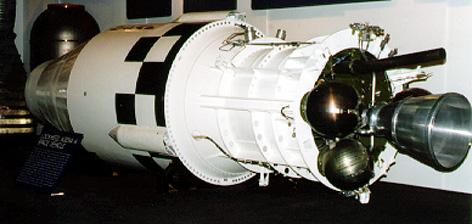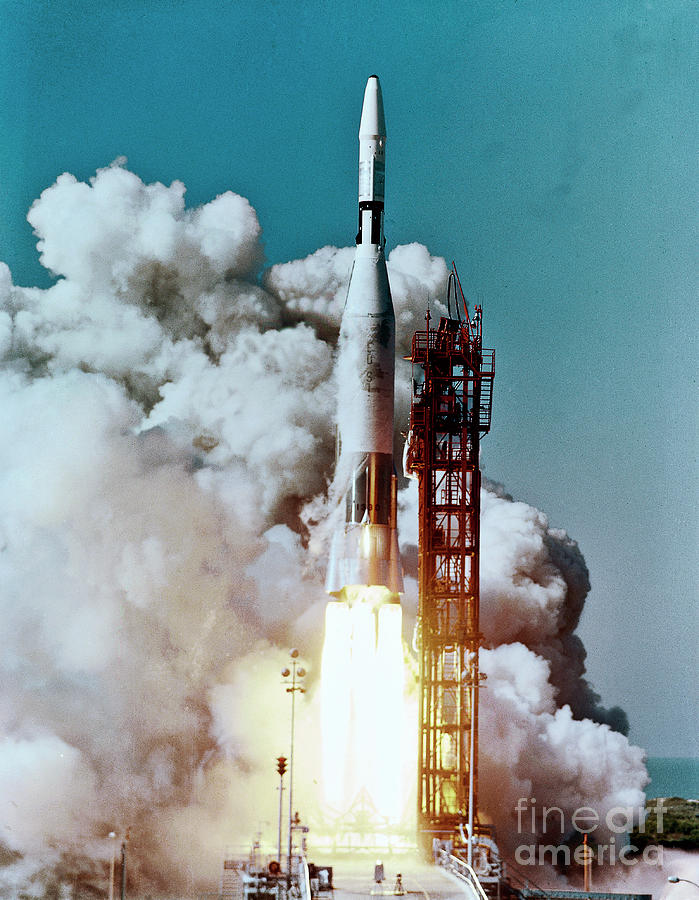
I don't quite get what exactly your question is regarding Atlas. This applies to both Agena A and the early AJ10s.ģ) Ablestar unlocks a year before Agena B, so the AJ10 family gets access to restartability a bit earlier.Ĥ) The Juno IV is a good engine and could take Agena's place, if you don't mind that is was never flown historically. You might have to underburn your TLI stage. Agena is often the superior choice between the two because it is pump-fed and therefore does not require high-pressure tanks.Ģ) Lunar missions can be a bit tricky without restartable engines, because you cannot (easily) use the same stage for LEO circularization and TLI burn.
#Agena rocket series#
These differed in that the SLV-2G used Castor 1 strap-on boosters, whereas the 2H used Castor 2s.You need to be a bit more precise - what exactly is it that you are asking?ġ) If you restrict yourself to American engines that have seen real-world use, you only have Agena and the AJ10 series as upper stages in the early satellite era. The Thorad-Agena was flown in two different configurations, the SLV-2G, and the SLV-2H. With the main engine being the only source of attitude control, the launch vehicle tumbled uncontrollably and exploded 30 seconds after launch, the debris impacting in Bear Creek Canyon a quarter mile from the launch complex. Flying debris tore up the Thor's thrust section, causing total loss of thrust. The booster lifted and flew normally until the start of the pitch and roll program about 20 seconds after liftoff at which point the turbopump gearbox disintegrated due to loss of lubricant.

A technician mistakenly added too much lubricant to the Thor's fuel system, the result being that the excess fluid formed a frozen plug in a section of plumbing. The other total failure was the attempted launch of a KH-4B photo-reconnaissance satellite on February 17, 1971. Without the pins, the gyro rotated out of position with the effect that the booster lost control almost as soon as the pitch and roll sequence started.

It was discovered that the yaw gyro was installed improperly and had missing alignment pins, apparently because a pad technician had mistakenly broken them off during installation. The fuel inside them was removed and reused in a subsequent Nimbus launch.Īs part of the investigation, parts of the Thor were recovered and examined. They were successfully fished out of the ocean two weeks later and their protective casings found to be intact.

On September 27, the Nimbus satellite was located in 300 feet of water near the Santa Barbara Islands with the SNAP units nearby. After the destruction of Nimbus-B's launch vehicle, Navy crews began an extensive search for the SNAP generators. As the possibility of a launch failure had been considered during their design, the power generators were equipped with a robust casing to prevent their radioactive contents from escaping into the environment. The satellite carried a pair of isotopic power generators known as SNAP (Systems For Nuclear Auxiliary Power).

The first total failure was the launch of a Nimbus weather satellite on May 5, 1968, when control of the Thor failed during launch and it was destroyed by Range Safety action at T+120 seconds. The launch of a KH-4A photoreconnaissance satellite on May 9, 1967, malfunctioned when the Thor's first stage failed to cut off on schedule and continued burning until LOX depletion, thus putting the satellite into an incorrect orbit that seriously reduced its image quality. Most launches carried Corona (KeyHole) reconnaissance satellites, particularly spacecraft of the KH-4 series, however some scientific and technology development satellites were also flown, mostly towards the end of the program.Ĥ3 launches took place from 1966-72 with two complete failures and one partial. Three Castor rockets would be used as boosters. The second stage was the Agena-D, which had already been used in conjunction with the standard configuration Thor, as the Thor-Agena. The Long Tank Thor first stage was later adopted by NASA's Delta program for its "Thrust Augmented Improved Delta", which first flew in 1968. The first stage of the rocket was a stretched Thor variant named "Long Tank Thrust Augmented Thor". The Thorad-Agena was an American expendable launch system, derived from the Thor and Delta rockets.


 0 kommentar(er)
0 kommentar(er)
